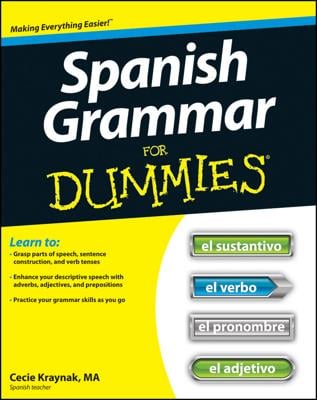You use the present perfect verb tense in Spanish to express or describe actions that have happened recently and/or actions that still hold true in the present. The present perfect tense is one of seven compound tenses, which means you use the helping verb haber (to have) in the present tense with a past participle.
| Conjugation | Translation |
|---|---|
| yo he | I have |
| tú has | You (informal) have |
| él/ella/ello/uno ha | He/she/one has |
| usted ha | You (formal) have |
| nosotros hemos | We have |
| vosotros habéis | You all (informal) have |
| ellos/ellas han | They have |
| ustedes han | You all (formal) have |
In English, for example, you eat in the present, but you have eaten in the present perfect (eaten is the past participle). In other words, you’re done eating in the present tense. Granted, the distinction between the past and the present perfect can be a little subtle in any language, but you’ll get the hang of it.
The following sample sentences show the use of the present perfect:
Yo he terminado la carta. I have finished the letter.
Ellos han empezado la casa nueva. They have started the new house.
Ella ha leído aquella novela. She has read that novel.
As you go around telling people what you’ve just done or are still doing, keep the following rules and regulations in mind:
Never separate the verb haber and the past participle with any other words.
When using an object pronoun with the present perfect, the pronoun must precede the conjugated form of haber.

